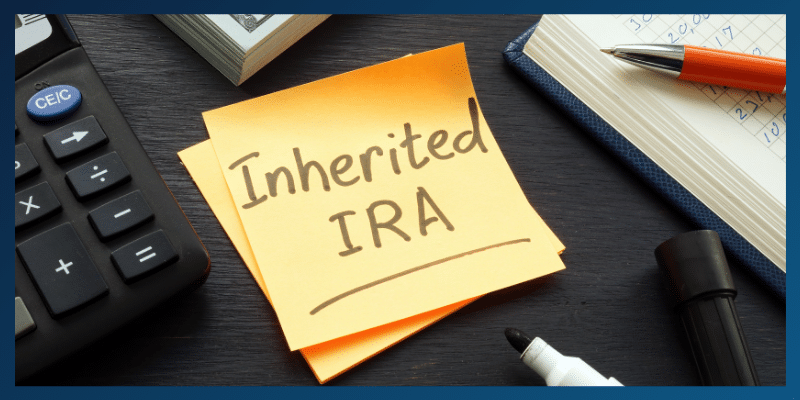
An Inherited IRA (or Beneficiary IRA) is a retirement account opened when you inherit an IRA or employer-sponsored account after the original owner’s death. While you can’t make new contributions, the funds can continue to grow tax-deferred, and you can typically withdraw funds without facing the usual 10% early withdrawal penalty. But distribution rules differ significantly depending on specific circumstances.
Withdrawal Methods: Life-Expectancy vs. 10-Year Rule
Depending on your relationship to the decedent and their age at death, there are typically two primary distribution methods:
- Life-Expectancy Method (“Stretch IRA” for Eligible Beneficiaries)
- Eligible Designated Beneficiaries—surviving spouses, minor children, disabled or chronically ill individuals, and those no more than 10 years younger than the decedent can use this method.
- You must begin annual Required Minimum Distributions (RMDs) by December 31 of the year after death, based on your single-life expectancy, recalculated each year.
- Minor children can use this method only until they reach age 21; after that, the 10-year rule applies.
- 10-Year Rule (Mandated for Most)
- Most non-spouse designated beneficiaries who inherit after December 31, 2019, must empty the account by December 31 of the 10th year following the year of the original owner’s death.
- If the decedent had already begun RMDs at the time of death, you also owe annual RMDs during the 10-year period.
- If the original IRA owner had not started RMDs, the beneficiary is not required to take RMDs during years 1 through 9, but the account must be fully distributed by the end of year 10.
Once again, all assets must be withdrawn by December 31 of the 10th year after the owner’s death—or penalties apply.
Other Options to Consider
- Spousal Transfer: This is only available if the spouse is the sole beneficiary. You can transfer the assets into your existing or new IRA. RMD rules are dependent on your age and the IRA type.
- Lump‑Sum Distribution: You can withdraw the full balance immediately—no penalty, but it could leap you into a higher income tax bracket for that year.
If multiple beneficiaries inherit, the IRA accounts must be separated by December 31 of the year after death, or distributions default to the oldest beneficiary’s schedule.
IRS 2025 Rule Update
Initially, the IRS issued Notice 2024‑35 (April 2024), extending the waiver of 2024’s RMD penalty for inherited IRAs for beneficiaries whose owners passed in 2020–2023. Though penalties were waived, the underlying requirement to take annual RMDs remained.
Final IRS rules now stipulate that, starting in 2025, annual RMDs are required when the decedent had begun RMDs before death.
What About the “One Big Beautiful Bill Act” (OBBBA) of 2025?
The recent OBBBA, signed on July 4, 2025, extends key provisions of the Tax Cuts and Jobs Act but does not alter inherited IRA or retirement distribution rules. That means the SECURE Act/SECURE 2.0 rules—including the 10-year rule and annual RMD requirements—remain intact.
Planning Implications & Next Steps
- Tax bracket management: Spreading withdrawals over the 10-year period—and taking annual RMDs when required—can help minimize tax liability.
- Strategic timing: Thoughtfully planning when and how much to withdraw each year can help optimize your tax bracket and preserve more of your inheritance over the 10-year distribution window.
- Get professional guidance: The rules are complicated, and mistakes can be costly—missed RMDs can trigger penalties.
How Mission Wealth Can Help
At Mission Wealth, our advisors specialize in navigating the complexities of inherited IRAs—from modeling different withdrawal scenarios to integrating distributions into your broader tax and retirement strategy.
Rather than leaving it to chance, let’s build a distribution plan tailored to your needs—so you honor the legacy you’ve been entrusted with and make smart financial decisions for your own future.
Schedule your free consultation today and take the guesswork out of inherited IRA planning.
This content is for informational purposes and does not constitute tax or legal advice. Consult a qualified advisor regarding your specific situation.

Mission Wealth Can Help You Retire with Confidence
This may be your first time retiring, but it's not ours. Careful coordination is required to ensure your retirement income strategy is tax-efficient and sustainable. You will face many decisions when retiring. Let us guide you through your options and create a plan.
Mission Wealth’s vision is to provide caring advice that empowers families to achieve their life dreams. Our founders were pioneers in the industry when they embraced the client-first principles of objective advice, comprehensive financial planning, coordination with other professional advisors, and proactive service. We are fiduciaries, and our holistic planning process provides clarity and confidence. For more information on Mission Wealth, please visit missionwealth.com.
To meet with a Mission Wealth financial advisor, contact us today at (805) 882-2360.
Let's Keep in Touch!
Subscribe for exclusive content and timely tips to empower you on your financial journey. Our communications go straight into your inbox, so you'll never miss out on expert advice that can positively impact your life.Recent Retirement Articles

6 Financial Steps to Take if You’ve Been Impacted by a Corporate Layoff
September 4, 2025
Holding On to These Moments: Allyn’s Retirement Story
August 27, 2025


